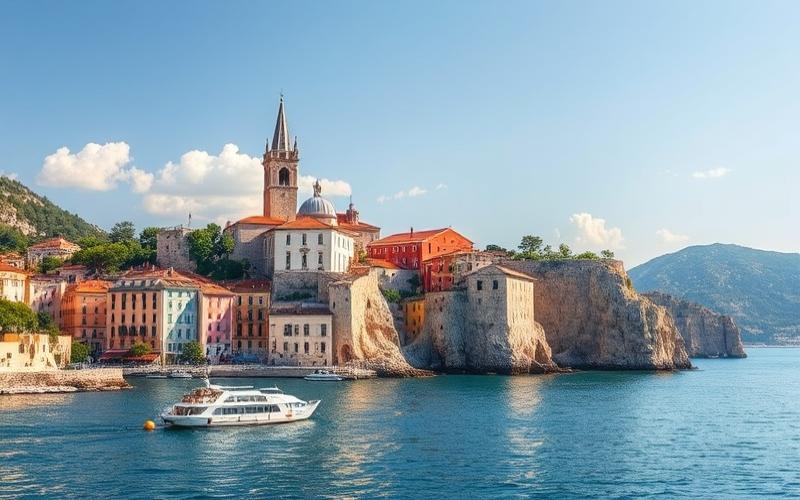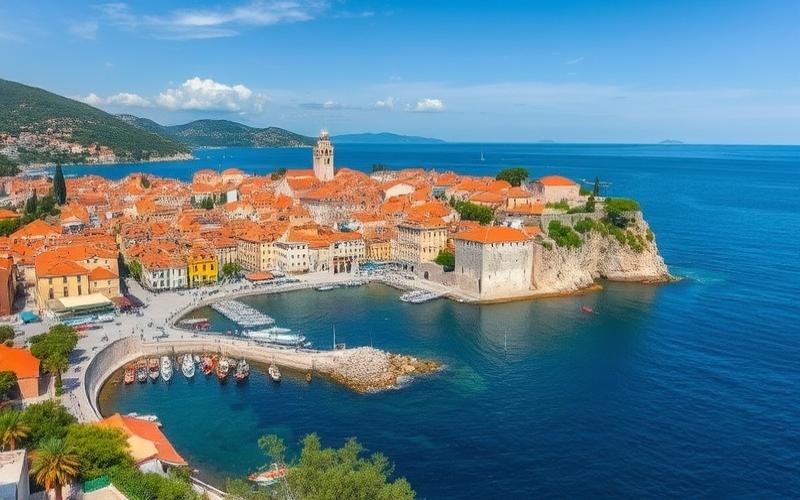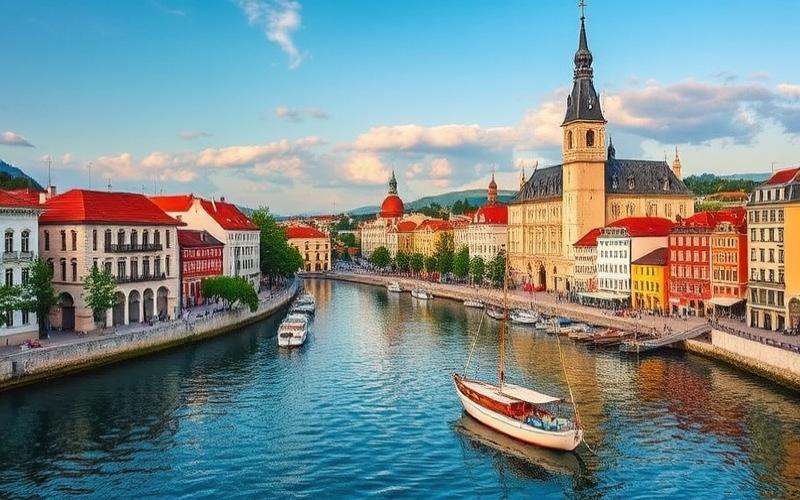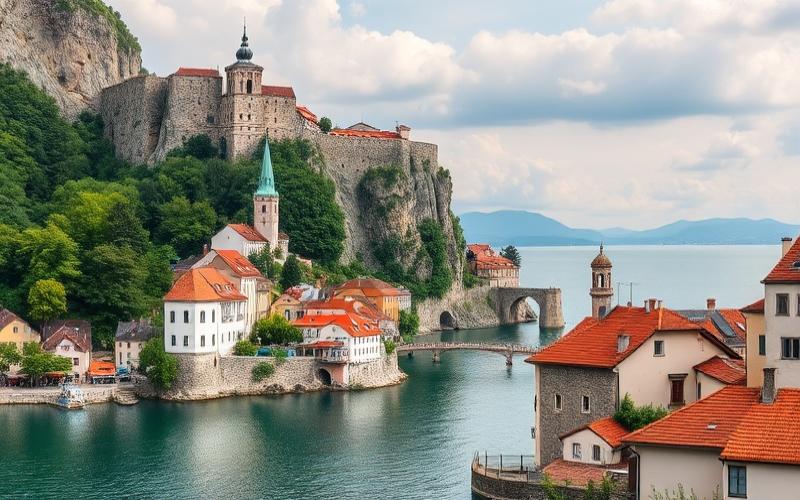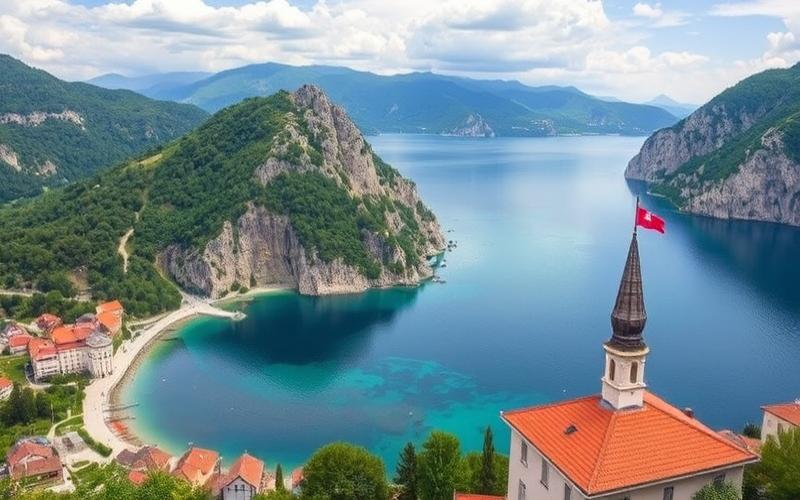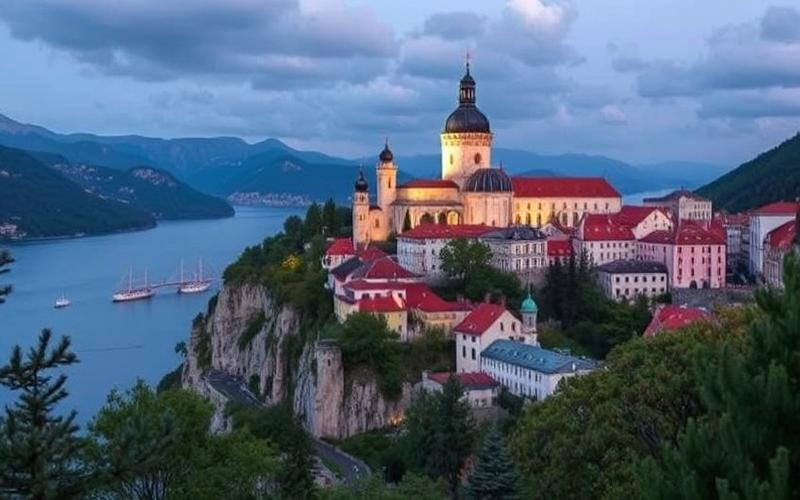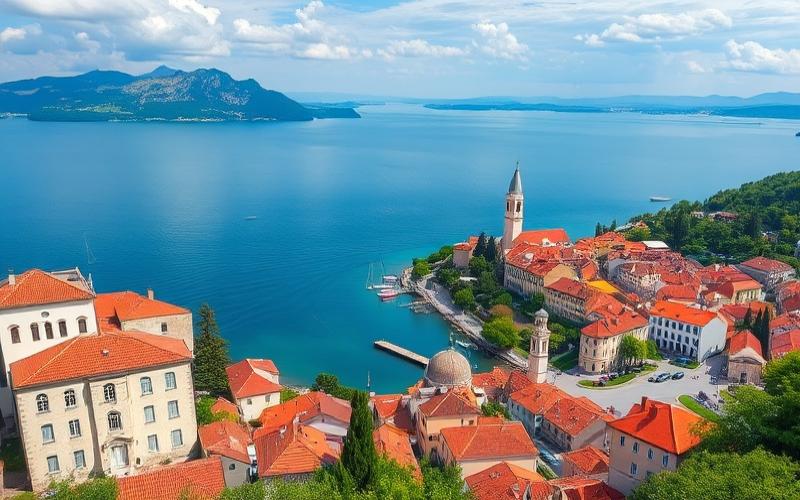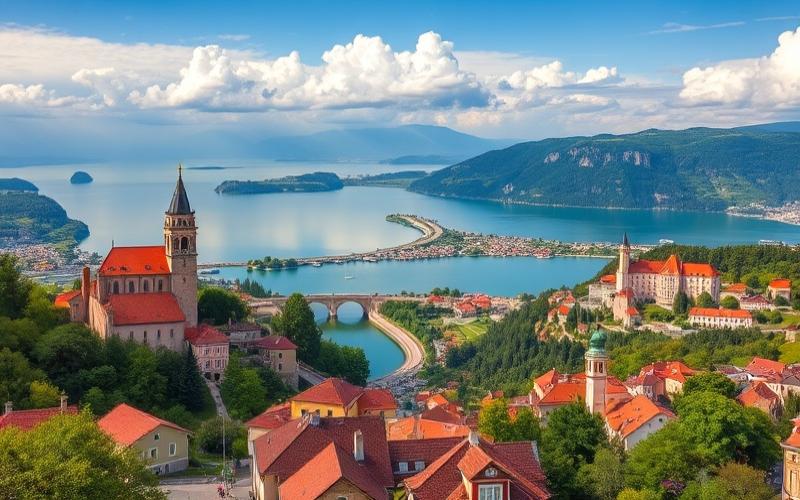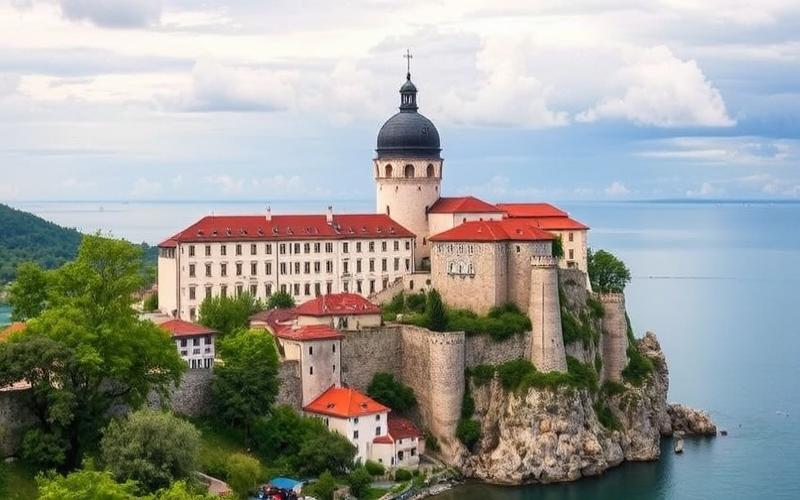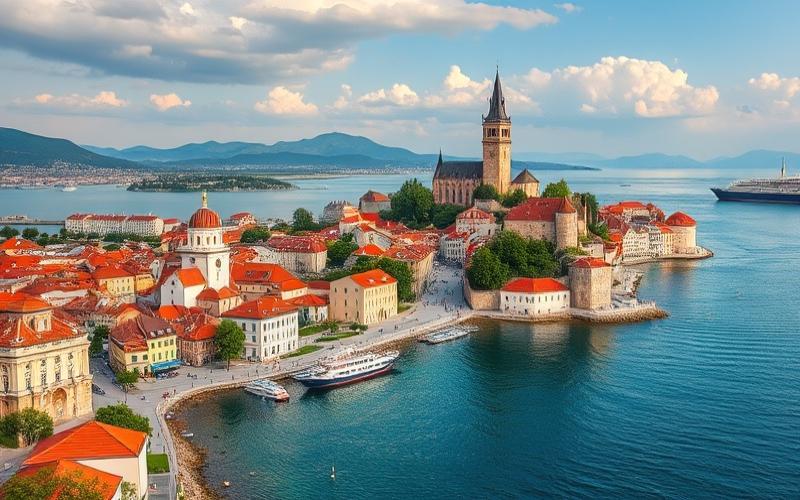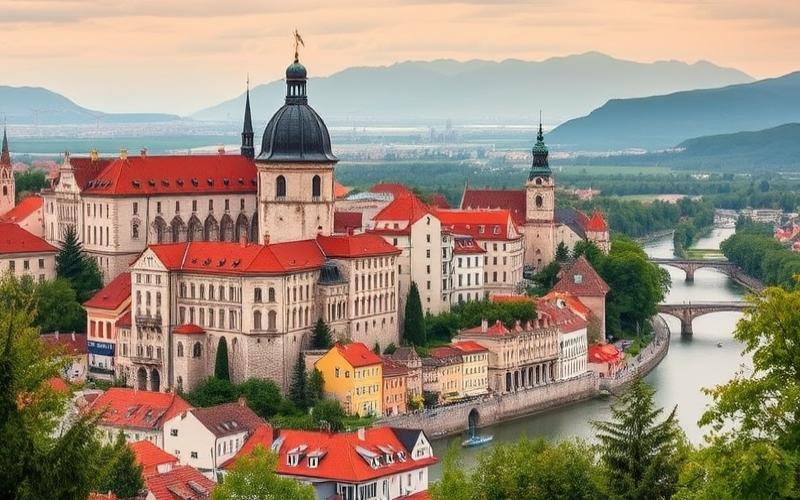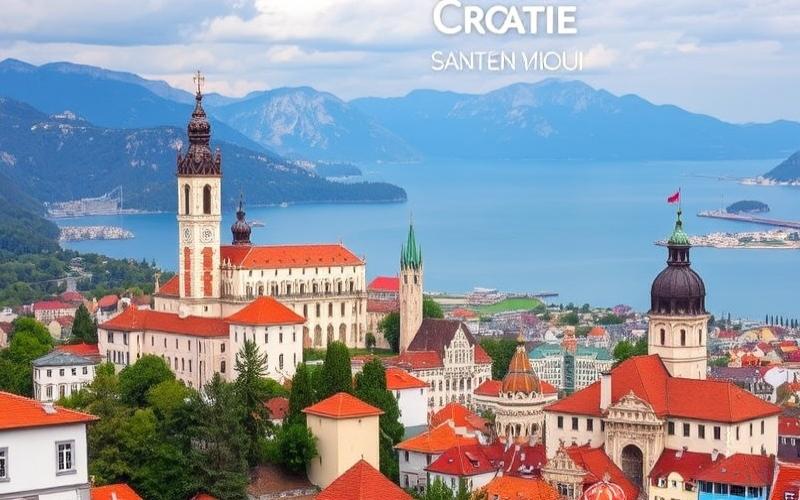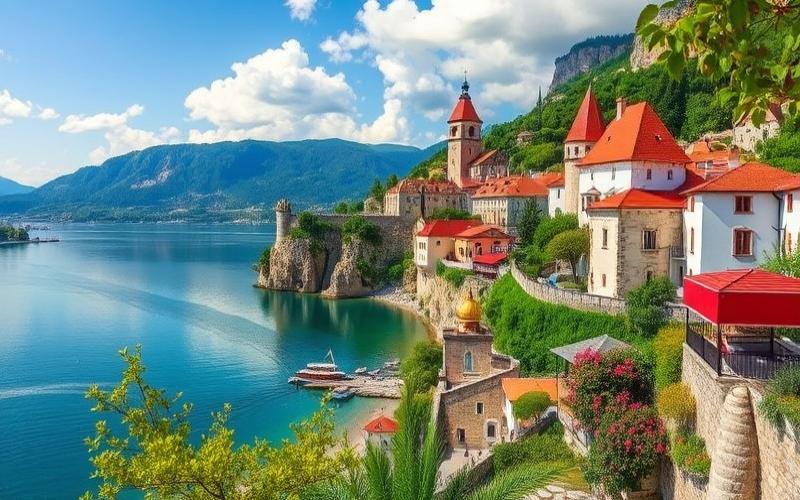
 Published on and written by Cyril Jarnias
Published on and written by Cyril Jarnias
Nestled in the heart of Eastern Europe and bordered by the Adriatic Sea, Croatia offers a unique culinary experience that captivates both travelers and expatriates.
This food guide reveals local delights, from traditional cevapi to succulent seafood dishes. By immersing yourself in the richness of local ingredients and recipes passed down through generations, you’ll discover how each Croatian region possesses its own gastronomic heritage.
Whether you’re tempted by prosek, a sweet wine produced on the Dalmatian islands, or craving artisanal cheeses, this guide will take you on a journey to the heart of a cuisine as diverse as its history.
Exploring Croatia’s Traditional Markets
Croatia’s traditional markets hold a central place in the country’s daily life and culture. They are much more than mere commercial exchange points: they embody the Croatian soul, blending conviviality, transmission of know-how, and product authenticity.
Cultural Importance and Role in Daily Life:
- Markets are essential meeting points for locals. People come not only to shop but also to exchange news, discuss recipes, and perpetuate family culinary traditions.
- They are places of intergenerational transmission, where you’ll encounter elderly vendors with headscarves maintaining ancestral gestures alongside young merchants continuing family businesses.
- The atmosphere is lively, marked by the coming and going of residents, diverse dialects, merchants’ calls, and an authenticity hard to find elsewhere.
Main Traditional Markets in Croatia:
| City | Iconic Market | Special Features |
|---|---|---|
| Zagreb | Dolac | Large open-air market, heart of the capital |
| Split | Pazar (Green Market) | Proximity to Diocletian’s Palace, fresh products |
| Dubrovnik | Gruž | Port market, seafood and local products |
| Rijeka | Central Market | Maritime specialties, port atmosphere |
| Šibenik | Traditional Market | Small size, authentic atmosphere, farm products |
Atmosphere and Anecdotes:
In markets, conviviality comes first. In Šibenik, for example, most vendors are elderly ladies with warm smiles, ready to share anecdotes about their products or region.
In Split, the Pazar market is in full swing from dawn, with each stall competing in colors and scents; discussions are often loud and cheerful, and it’s not uncommon to witness small scenes of daily life between regular merchants and loyal customers.
Markets are also places of solidarity: for some, having a stall is primarily a social connection, a way to remain active within the community.
Typical Products to Discover:
Seasonal Fruits and Vegetables:
- Tomatoes, peppers, eggplants, strawberries, asparagus, figs, apples, plums.
Seafood Products:
- Freshly caught fish (sea bream, sea bass, sardines)
- Seafood (squid, mussels, shrimp)
- Specialties like brodet (fish stew)
Cheeses and Charcuterie:
- Paški sir (cheese from Pag Island)
- Pršut (smoked dry-cured ham)
- Artisanal sausages
Other Specialties:
- Istrian truffles
- Honey, jams, local olive oils
- Fresh flowers and aromatic herbs
Practical Tips for Expatriates:
- The best times to visit markets are early morning, when products are freshest and crowds are smaller.
- Bargaining is not common practice in Croatia; it’s better to chat friendly with merchants, who appreciate politeness and genuine curiosity.
- To discover authentic flavors, ask vendors directly for preparation tips or traditional recipe ideas.
- Choose small producers for artisanal products (cheeses, oils, jams) and taste on-site when offered.
- Don’t hesitate to buy small quantities to sample different products, and observe local habits to spot the best stalls.
Culinary Recommendations:
- Use tomatoes, peppers, and eggplants to make a simple and flavorful Dalmatian salad.
- Try grilled fish from the market with a drizzle of Istrian olive oil.
- Pair a cheese and pršut platter with fresh market bread for a typical Croatian appetizer.
Good to Know:
Traditional markets like Dolac in Zagreb and Pazar in Split are filled with local products such as charcuterie and olive oils; for the best experience, visit early morning and don’t hesitate to chat with merchants to discover the day’s specialties.
Key Takeaway:
Croatian markets are unique cultural and gastronomic immersion spots, where every visit becomes a sensory and human journey, perfect for absorbing the local way of life.
Iconic Restaurants and Their Specialties
| Region | Iconic Restaurant | Specialties & Anecdotes | Decor & Atmosphere |
|---|---|---|---|
| Dubrovnik | Kopun | Renowned for “kopun,” castrated rooster stewed according to a revisited ancient recipe. The chef insists on using locally raised poultry and market vegetables. A regular customer recounts: “Here, every bite evokes the city’s history.” | Shaded patio, ancient stones, view of the old town. |
| Dubrovnik | Panorama | Essential spot for the view spectacle as much as for its refined Mediterranean cuisine: fresh fish, seafood risottos. | Located atop Mount Srd, exceptional Adriatic panorama. |
| Split | Restaurant Perlica (Klis) | Stronghold of spit-roasted lamb (“janjetina na ražnju”), prepared before diners according to tradition. Meat comes from surrounding hills, fed on wild herbs. Split residents gather here for special occasions. The chef states: “Here, patience is the secret: slow cooking enhances tenderness.” | Rustic terrace, wood fire scents, convivial atmosphere. |
| Vis Island | Roki’s | “Komiška pogaća,” Komiža specialty: bread topped with salted anchovies, onions, and tomatoes, reflecting island fishing tradition. Products come from morning catch and restaurant garden. | Shaded garden amid vineyards, dry stone walls. |
| Rab Island | Boutique Delicije/Natura Croatica | For famous Rapska torta: almond cake, lemon zest, and maraschino liqueur, snail-shaped. Recipe allegedly dates back to a 12th-century papal banquet. “Each cake is a work of art, prepared as in old times,” affirms the pastry chef. | Authentic small shop, pastry displays, family welcome. |
| Skradin | Cantinetta | Skradin risotto (“skradinski rižot”), cooked for 8 hours, blend of shredded veal, rice, and homemade broth. Recipe passed father to son symbolizes local patience. Anecdote: traditionally only men prepare this dish during celebrations. | Vaulted room, exposed stones, intimate atmosphere. |
| Lovran | Draga di Lovrana | Modern Michelin-starred cuisine: Kvarner scampi, wild asparagus, local olive oils. Tasting menus tell Croatia’s sea and mountain story. Chef sometimes serves dishes tableside, explaining each ingredient’s origin. | Bay view, contemporary design, personalized service. |
| Hvar | Giaxa | Located in a Gothic palace, Giaxa elevates Dalmatian cuisine: fish carpaccio, island lamb, local wines. Ancestral recipes refined with finesse. Chef loves to say: “Every dish is a story, every ingredient has memory.” | Historic patio, carved stones, timeless elegance. |
Must-Try Croatian Specialties and Local Ingredients
- Spit-roasted lamb: mountain lamb, aromatic herbs (thyme, rosemary), wood fire cooking.
- Komiška pogaća: salted anchovies or sardines, tomatoes, onions, homemade bread dough.
- Rapska torta: Rab almonds, citrus zests, maraschino liqueur.
- Skradin risotto: local veal, capon and root vegetable broth, rice, sheep cheese.
- Kvarner scampi: caught in the bay, renowned for delicate flesh.
- Adriatic fish: sea bream, sea bass, sardine, prepared grilled or in brodet (stew).
Anecdotes and Testimonials
In Skradin, risotto preparation is a community event, sometimes reserved for major family celebrations.
On Vis Island, fishermen perpetuate fish salting using methods passed down for generations.
In Dubrovnik, regulars say Kopun’s cuisine revives forgotten medieval recipes.
Varied Experiences
From family restaurants serving rustic dishes to starred establishments exploring modernity, Croatia’s scene offers a range from simple conviviality to high gastronomy.
The decor, whether Gothic palaces, sea-view terraces, or vineyard gardens, is an integral part of the culinary experience.
Good to Know:
In Dubrovnik, don’t miss Restaurant Proto, renowned for its Dalmatian bouillabaisse, while in Zagreb, famous Vinodol invites you to discover štrukli prepared with local fresh cheese.
Key Takeaway
Croatian cuisine’s richness lies in its diverse terroirs, transmission of know-how, and ability to blend tradition and innovation.
Understanding Croatian Culinary Etiquette
Family meals hold a central place in Croatian social life, often considered moments of sharing and conviviality. It’s customary for families to gather around a large table, especially on Sundays or holidays, to savor traditional dishes prepared with care. During meals, table manners are crucial: wait for the host or eldest person to start eating before serving yourself. Proper utensil use is expected, and starting before others or taking large portions without waiting your turn is frowned upon.
Customs During Formal Meals
- Arrive on time (punctuality is appreciated)
- Greet the host with a handshake or, for close ones, a hug
- Bring a small gift: flowers (avoid chrysanthemums, associated with mourning), chocolates, or a bottle of local wine are welcome
- Dress elegantly and modestly (formal attire for formal occasions, neat clothing for informal meals)
For informal meals, the atmosphere will be more relaxed, but basic politeness rules remain: compliment dishes, participate in conversations, and thank the host at meal’s end.
Traditional Croatian Dishes and Their Service
| Dish | Description & Service | Main Region |
|---|---|---|
| Pršut | Smoked ham served as appetizer, accompanied by sheep cheese (Paški sir) | Everywhere, Pag Island |
| Sarma | Cabbage leaves stuffed with meat and rice | Continental Croatia |
| Ćevapčići | Small grilled meatballs, often served with ajvar | Everywhere |
| Peka | Meats or octopus cooked under bell with vegetables, served to share | Dalmatia, Balkans |
| Maneštra | Thick vegetable and bean soup | Istria |
| Pljeskavica | Spicy minced steak, served with fries or vegetables | Balkans, Croatia |
| Grilled squid | Stuffed or grilled squid, served with vegetables | Coast, islands |
| Vis pies | Savory pastries filled with fish, vegetables, or cheese | Vis Island, Komiža |
Regional Differences in Cuisine and Table Behavior
- Dalmatia and Istria: Mediterranean cuisine: olive oil, fish, grilled vegetables, aromatic herbs, truffles. Meals are lighter and often accompanied by local white wine.
- Zagreb and Slavonia: Richer cuisine: meats in sauce, cream, cheese, generous desserts. Austro-Hungarian influence appears in pastries and paprika use.
- Gorski Kotar and Lika: Mountain dishes based on game, potatoes, cabbage, mushrooms.
Practical Tips
- Always compliment the host on served dishes.
- Don’t refuse a first portion; it’s polite to accept at least a little of each dish.
- Restaurant tipping isn’t mandatory but appreciated: leave 10-15% in gastronomic establishments.
- If giving flowers, prefer odd-numbered bouquets and avoid chrysanthemums.
Local Food Festivals
Culinary festivals mark the Croatian year: truffle markets in Istria, sardine festivals on the coast, cheese festivals on Pag Island. These events celebrate local products through tastings, competitions, markets, and cooking demonstrations. They’re opportunities to discover Croatian hospitality, witness traditional cooking demonstrations (like peka), and participate in collective outdoor meals.
Key Takeaway
- Respect table manners and compliment dishes.
- Adapt attire to the occasion.
- Bring a small gift if invited.
- Discover regional specialties and participate in festivals for authentic immersion.
Good to Know:
During a formal Croatian meal, it’s polite to wait for the eldest to start, and bringing flowers or chocolate as a host gift is common; also note that gastronomy varies by region, with Dalmatia favoring seafood while Slavonia features spicier, meatier dishes.
Tips for Integrating International Ingredients into Local Cuisine
The most popular international ingredients that can enrich Croatian cuisine include avocado, quinoa, tofu, cumin, and curry. These products, from various culinary traditions, offer new flavor perspectives while respecting Croatian dishes’ identity.
Adapting International Ingredients in Traditional Croatian Dishes:
| Traditional Dish | International Ingredient | Possible Adaptation |
|---|---|---|
| Sarma (stuffed cabbage) | Quinoa, Tofu, Curry | Replace some meat with crumbled tofu or cooked quinoa for vegetarian version, subtly season filling with curry for exotic note. |
| Brudet (fish stew) | Avocado, Cumin | Add fresh avocado cubes as garnish for creaminess, incorporate pinch of cumin in tomato sauce for aromatic depth without masking marine flavors. |
| Pašticada (Dalmatian beef stew) | Quinoa, Curry, Tofu | Offer quinoa side instead of pasta or gnocchi, replace some meat with marinated tofu for vegetarian version, or add hint of curry to modernize sauce without dominating taste. |
Tips for Integrating These Ingredients Without Altering Dishes:
- Use international ingredients as complements, not total replacements, to preserve dish structure.
- Adapt proportions: gradually incorporate tofu or quinoa to test balance with local flavors.
- Prefer subtle seasonings: use curry or cumin in small quantities to not mask traditional Croatian herbs (rosemary, bay leaf, parsley).
- For avocado, add raw at preparation end to maintain texture and freshness, especially in hot dishes.
Respecting Local Culinary Traditions:
It’s essential to value local products (olive oil, Pag cheese, Adriatic fish) while experimenting with new ingredients, to maintain recipe authenticity.
Introducing international ingredients should be seen as creative extension rather than systematic substitution. The goal is to create bridges between cultures without erasing Croatian cuisine’s identity.
Where to Find These Ingredients in Croatia:
- Specialized markets in major cities (Zagreb, Split, Rijeka) offering exotic, organic, or vegetarian products.
- Asian or oriental grocery stores for tofu, curry, cumin.
- Organic stores and supermarkets for avocado and quinoa.
- Some local markets beginning to offer international products, especially in tourist areas.
Croatia’s culinary openness now allows finding most these ingredients in urban centers, while continuing to prioritize markets for fresh local products.
Good to Know:
Incorporate avocado into sarma for creamy texture, replace rice with quinoa in brudet and add touch of cumin to pašticada for unique flavor; these ingredients are available in specialized markets in Zagreb and Split.
Disclaimer: The information provided on this website is for informational purposes only and does not constitute financial, legal, or professional advice. We encourage you to consult qualified experts before making any investment, real estate, or expatriation decisions. Although we strive to maintain up-to-date and accurate information, we do not guarantee the completeness, accuracy, or timeliness of the proposed content. As investment and expatriation involve risks, we disclaim any liability for potential losses or damages arising from the use of this site. Your use of this site confirms your acceptance of these terms and your understanding of the associated risks.




